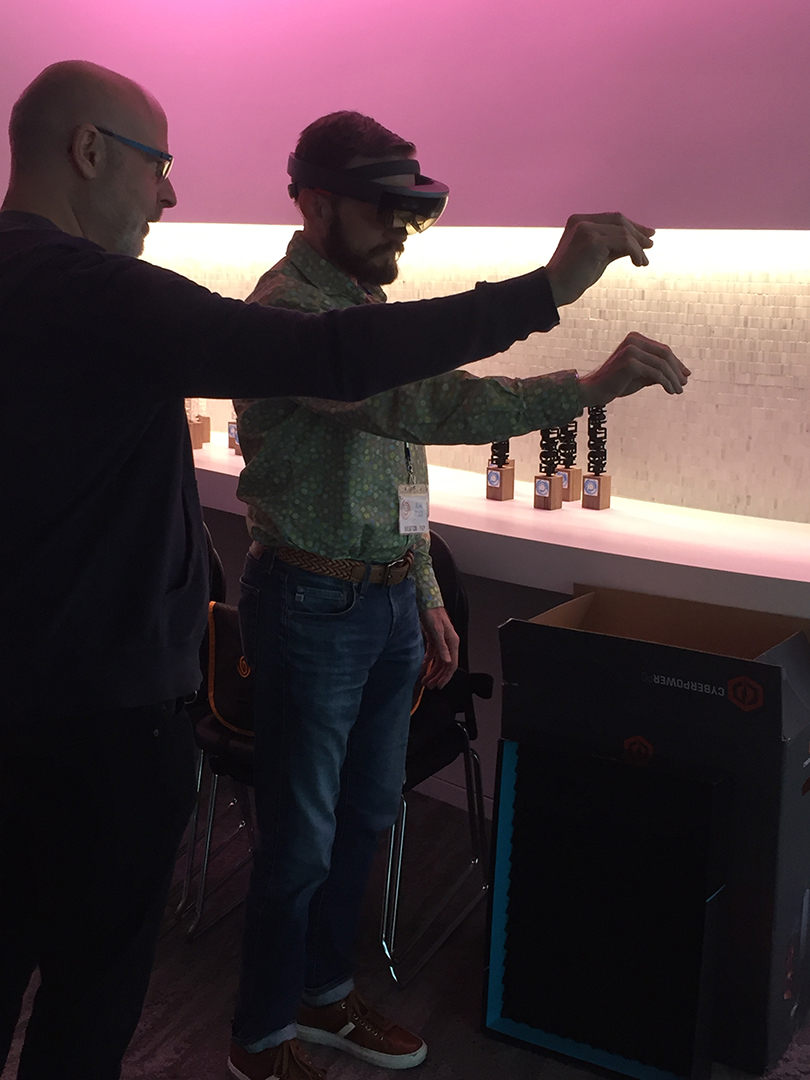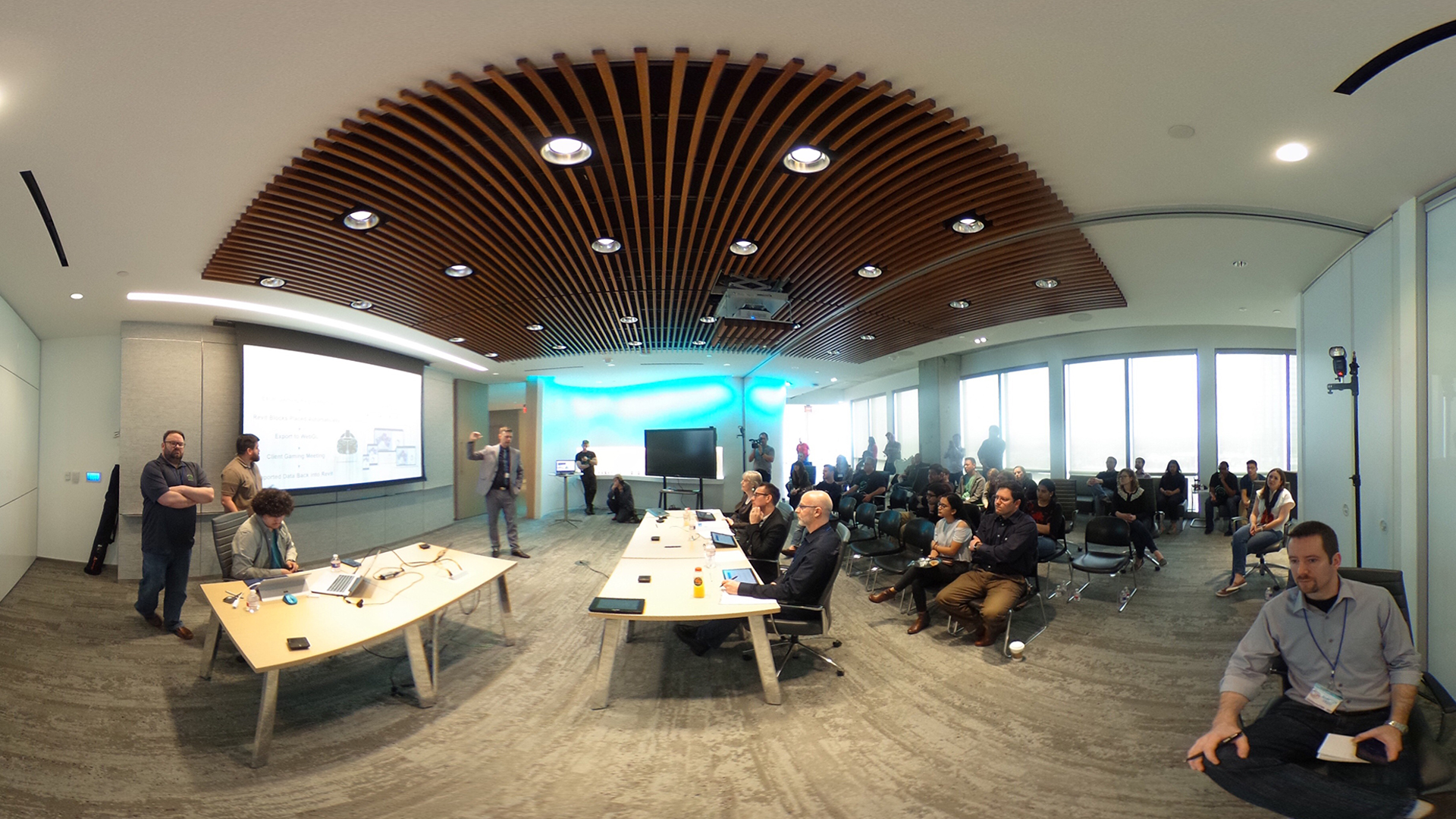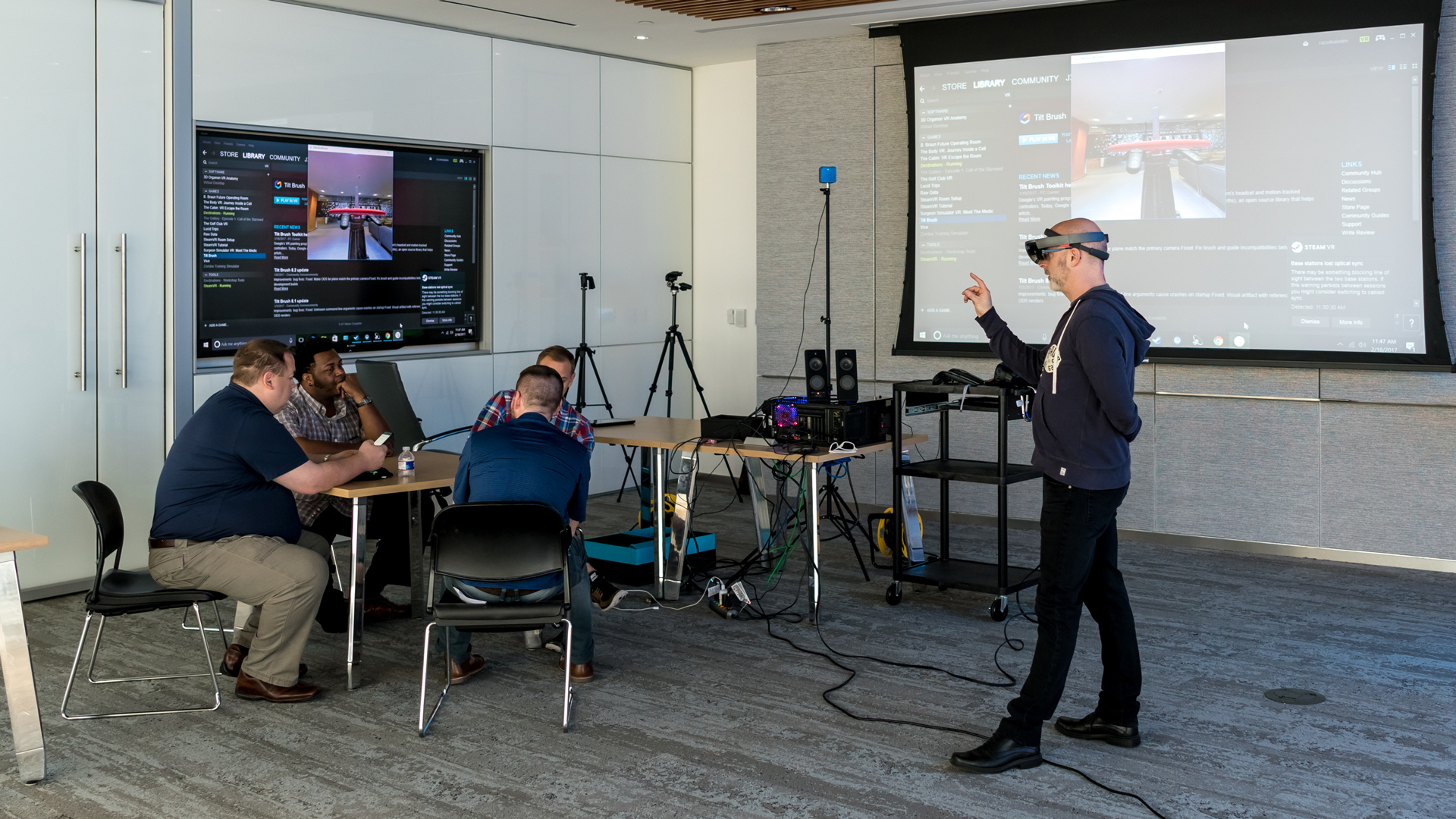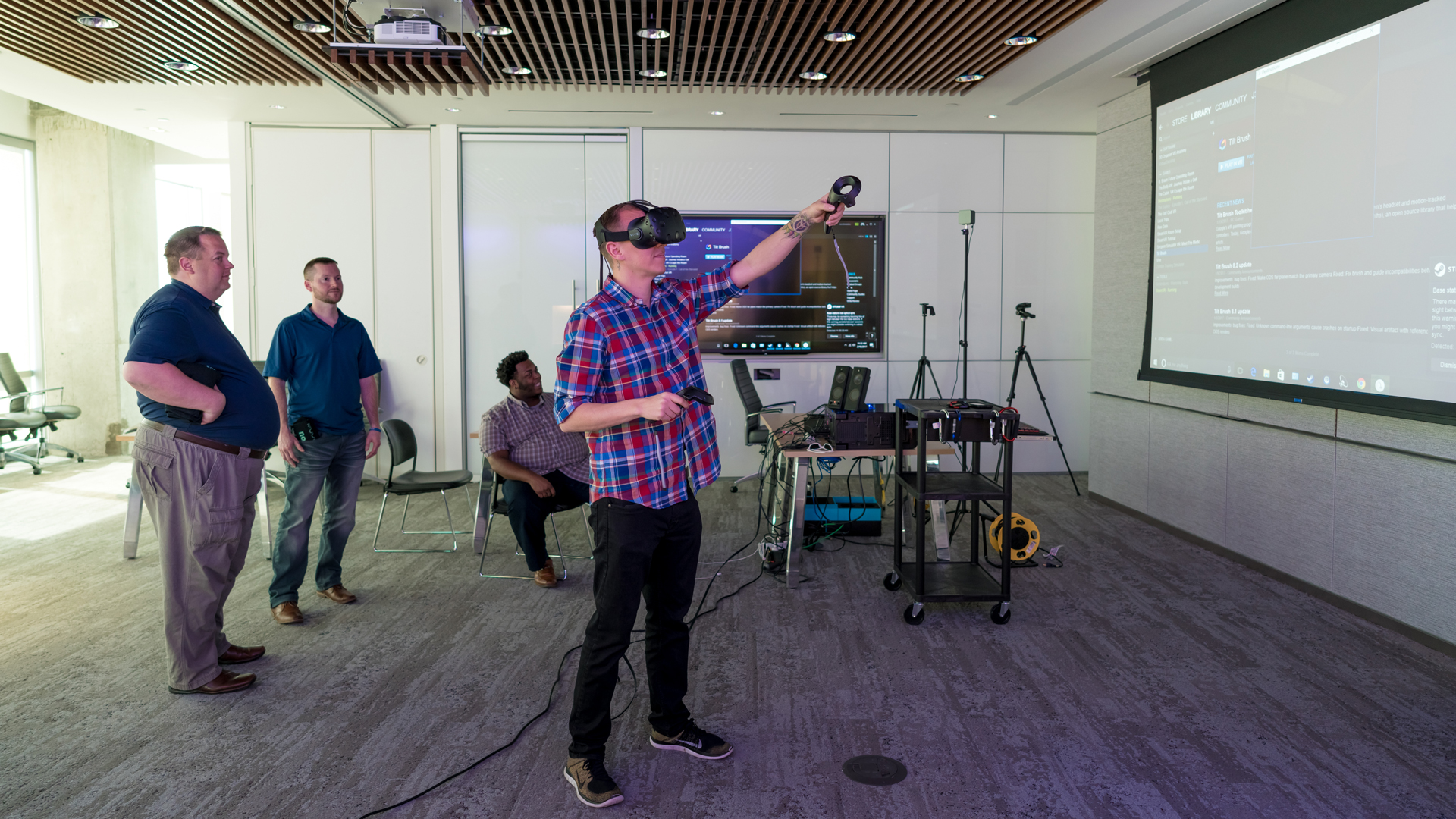By Howard Schargel
Safe Landing
I recently returned from my first visit to Houston Texas, invited by FKP Architects and the VR/AR Association (VRARA). My objective, to judge the forward-thinking, design-inspired, “Reality Reboot Hackathon”.
Rewind
A little over a month ago, I read a headline pushed to my phone. “VR/AR Association surpasses over 1,000 VR/AR organization listings in the Directory”. Huh? I never heard of this collective. Researching deeper, I saw names. Really. Big. Names. Google, Samsung, NYU, Lowes, and a bevy of other big-time players in their respective industries. Moving on to their chapter page, I understood the reason this association wasn't on my radar. No representation in the Greater Seattle region. That had to change, stat.
Having shared values and visions, I reached out and connected with the Global Executive Director, based out of their headquarters in NY. Familiar territory. After a long, enriching conversation and a few days to think it through, I took on the role of President of the Seattle Chapter of the VRARA...and then thy floodgates opened.
Bammm!
After getting set up on the mail system, an introduction is made to the President of the Houston Chapter, Jonathan Banks. Over an hour long conversation, I hear the impassioned voice of a serial entrepreneur, hungry to learn more and spread the gospel of the tech.
A day or two before reaching out to me, Jonathan (by way of VRARA), had partnered with architecture firm FKP, to host the Hackathon event over the weekend of Feb 17-19. FKP Architects were specifically looking for someone with working knowledge in Mixed Reality (MxR/MR); a technology that digitizes your real environment, so digital 3D objects can interact with your physical world. Think of Pokémon GO on steroids.
With a rich background in 3D, I’ve been fortunate enough to work with Microsoft’s R&D team on the initial development of their Mixed Reality device, HoloLens. There, I created some of the first “holograms” and later worked with partners including Lowes, Stanford School of Medicine and Paccar, creating some of the world's first enterprise-based solutions and experiences.
Houston...we have contact
Fast forward to last weekend. Day of event, I meet with the two main coordinators of the event, Aaron and Hampton. With shared backgrounds and interests, it wasn’t hard to get into deep conversations on architecture/design, and even deeper on how the emerging tech of mixed, virtual and augmented realities will play a huge role both today and in the not too distant future.
I set up some demos for them and other architects in the firm to experience, and then started mingling as the Hackathon guests started arriving.
It was a very nice, diversified crowd, with people ranging in age from impassioned high schoolers to seasoned professionals of 25 years or more. The gamut of professionals was represented from architecture to engineering, healthcare, education, construction, and even refinery.
I later gave a presentation titled, “The State of MR, VR, AR”, a basic introduction informing individuals who have limited exposure or understanding of the technologies individually and as a whole. I followed with a few Hololens demos to the crowd, projecting live video directly from the device's viewpoint onto the two larger screens. The next day I returned to give 1-on-1 VR and MR demos of my current work to the principals of the firm and a few lucky individuals, always happy to answer any questions I could.
Now to our regularly scheduled program
4 teams. 4 -7 people per team. 15 minute presentations. Really great presentations.
The Hackathon revolved around rebooting and re-imagining healthcare, design or whatever you thought appropriate for the greater good. Judging was tough, because every team gave very unique solutions to very different problems.
Out of respect for the teams, I won’t go into specifics about the projects, but rather a 10,000 foot level. Team One presented a unique solution, using cognitive brain waves for rehabilitation purposes, Team Two leveraged Autodesk Forge (a sponsor of the event) and Revit to create some unique architectural and construction based tool-sets, the third team created a location-based wearable device with a very interesting twist, and Team Four, a brilliant solution that solves a very real and immediate problem in the healthcare and hospital environment.
The panel judging was composed of a CEO of an esteemed architectural firm, a distinguished Venture Capitalist, and Professor from Rice University, and myself.
The winner is…
In the end it was the team that had the simplest solution and proved that out to be scalable across multiple industries; with a great road-map for strategic staging and deployment.
While the winning team came away with a generous cash prize and interest from the VC, I felt I benefited the most, having built incredible relationships in such a few short weeks.
The global networking I have been able to achieve through VRARA blows my mind. It’s not just the number of people, but rather the diversity, quality and passion of each individual wanting to know and be exposed to more.





